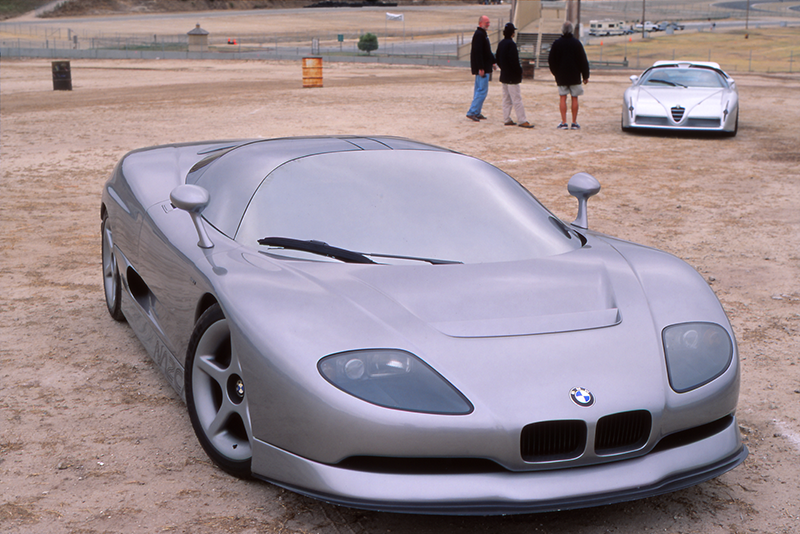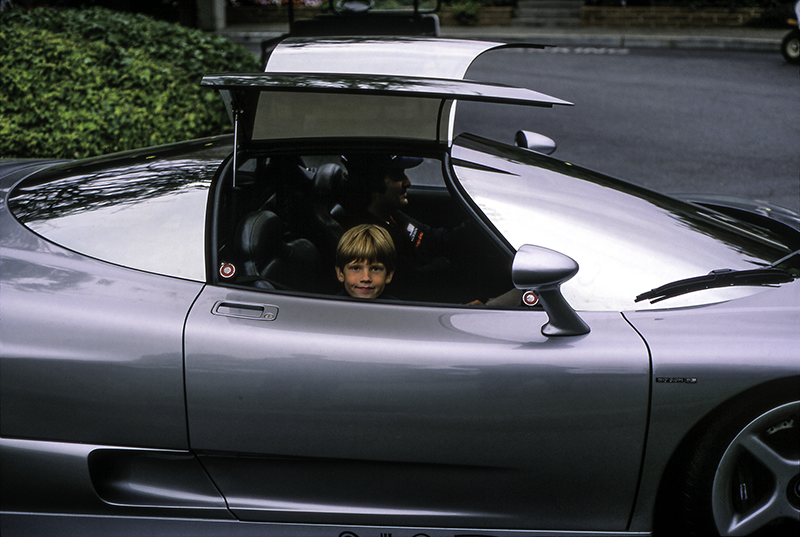My name is Miles Callan, and I knew I would be an industrial designer when I was 9 years old.
It began with a visit to Monterey, for the Pebble Beach Concours. There, in front of Quail Lodge, I encountered two fantastic cars, the Italdesign Nazca BMW M12, and the Alfa Romeo Scighera. Their singular look—mirrored glass canopies and flowing, effortlessly fast looking bodies—seemed to glow in the fast-moving fog coming off the Pacific. After catching up with Fabrizio Giugiaro, my father and he took the cars for a spin up to Laguna Seca and back.

On their return, Fabrizio invited me to take a ride with him in the Nazca
I was reluctant at first, but with a wink of encouragement from my dad, I opened the door of the Nazca. Half of the silver-mirror canopy opened on hydraulic rams and the door swing wide open, revealing a lush leather interior. Fabrizio sat behind the wheel, gunning the engine, his curly hair silhouette against the gray sky.
We roared out of the parking lot, out onto the curvy roads to Laguna Seca. Each corner passed at three, four times the normal speed. It was exhilarating, even if I couldn't quite see over the dashboard. The 12-cylinder engine echoed through the pines and the rock cuts, then we pulled off into some gravel, turned around, and sped back down the hill.
On the way back, I asked Fabrizio if he had made these cars. He replied that both had started with a pencil sketch. It seemed like magic, the idea that you could draw something and bring it to life so completely and viscerally. When we got back, dad snapped a photo of me, the moment my career as a designer began.

I learned a lot from the Nazca. It taught me how emotional connection is important to good design. It forever linked dreaming with making, design and experience, and drove home the value of good materials. In some ways, that childhood ride shows up in the strategies that guide my work:
• To cultivate relationships between people and objects. Pragmatically, the most ecologically sound object is one that is loved.
• To create objects that find meaning in service. Objects are created, live, and die, and the quality of that life is a measure of how they support and enhance human existence.
• To use materials to their fullest. Wise application saves energy, conserves resources, and maximizes the utility of a design.
To explore these strategies, I am constantly experimenting. Here are five ideas that currently interest me:
• Play value. A satisfying object gives pleasure in the way it performs its job. Interaction is ritual, a potential for creative connection as well as basic function.
• Evoking story. Objects excite, in part, by how they engage the imagination. When an object evokes a sense of motion, mystery, or adventure, it suggests stories of what life might be like if that object were held, used, owned.
• Cuteness. The sympathetic personality of the cute object elicits a protective emotional response. Cute designs are survivors. We are reluctant to dispose of them.
• Geometric primitives. Bold, geometric forms are fascinating. They are strong, but not intimidating. They are new, but ancient. They are radical, yet restrained. Few other formal languages are as robust.
• Mechanical sensuality. Few things are more satisfying than the snap of a pen cap, the smooth motion of a milled hinge, the visual strength of a dovetailed wood corner.
Browse some recent work...